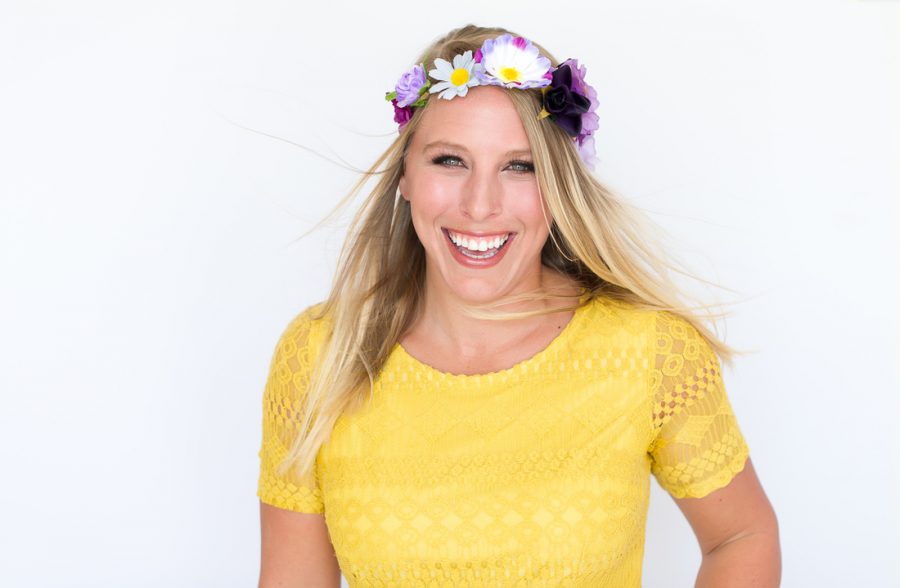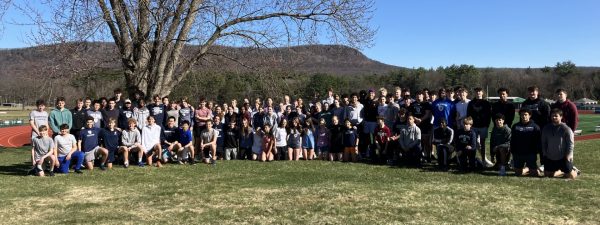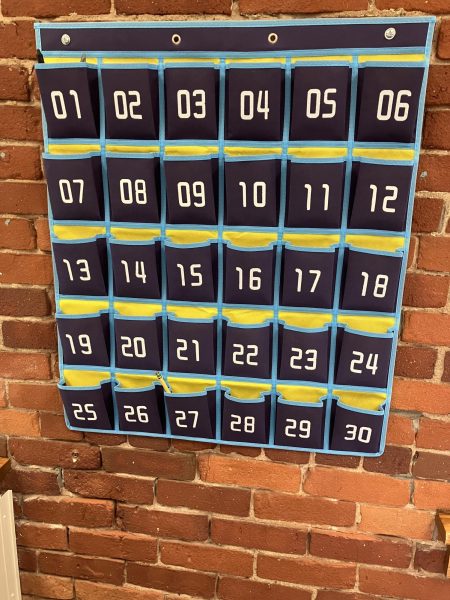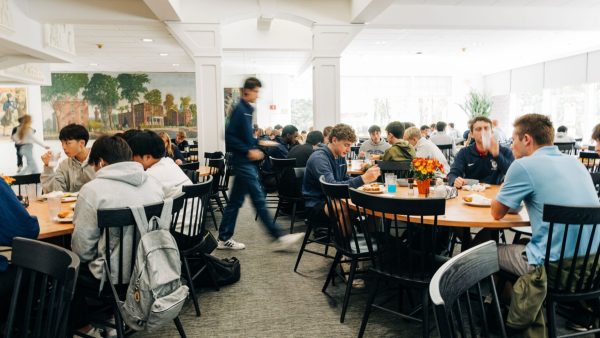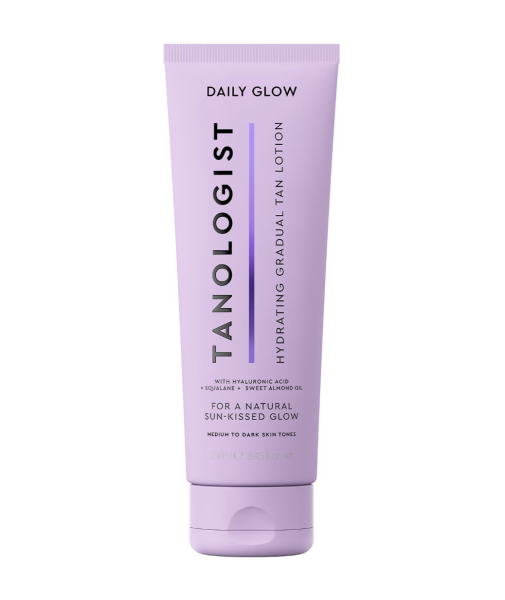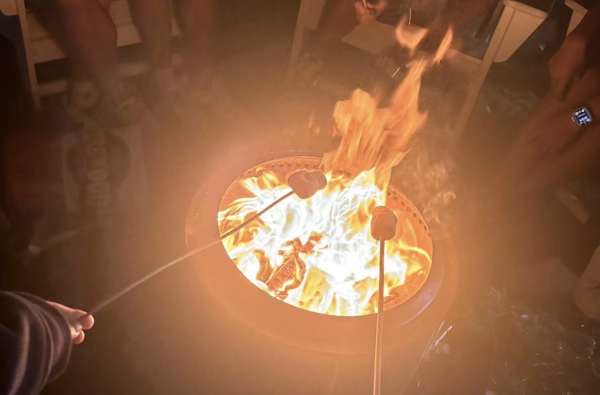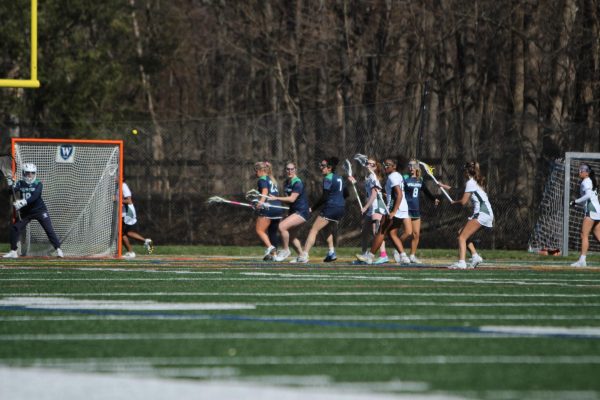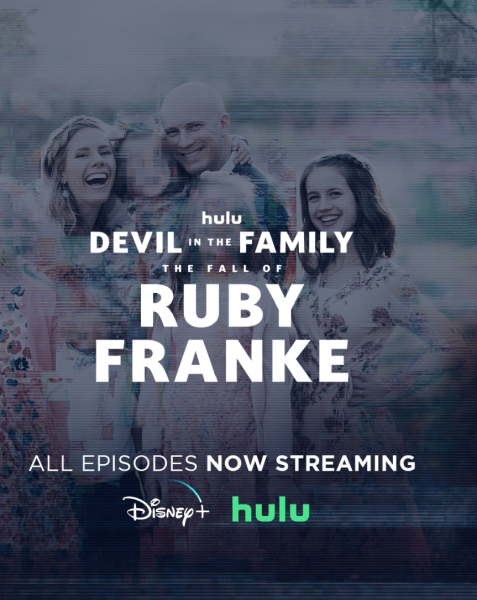Speaker Blends Humor, Humility in Message of Hope
Jess Ekstrom’s road to business and personal success was unpaved, full of roadblocks, potholes, dead ends, and a devastating $10,000 swindle. But to hear her tell her story, it couldn’t have been any other way.
Ekstrom, the founder and CEO of Headbands of Hope, a Raleigh, North Carolina-based company which for every headband sold donates one to a child with cancer, spoke at a Williston Northampton School assembly on December 7, describing her upbringing. With humor, humility, and a clear, passionate drive to inspire, Ekstrom recalled the myriad events that helped her rise from a college student to an entrepreneur, a word she says she “still struggles to spell.”
She’s been on the “TODAY” show and “Good Morning America,” and has been featured in Forbes, Vanity Fair, People, Family Circle, Elle, Lucky, and Women’s Health. But her first brush with fame came at age 12.
With characteristic self-effacement, Ekstrom recounted when she published a poem in the teenage edition of Chicken Soup for the Soul. When she arrived at school the day after the letter notifying her of the publication, she was busting with confidence. But what her friends knew was only that she got one poem published—and a $75 payday—not the other side of the story, that she’d submitted “probably 100” poems, all of which were rejected.
Ekstrom then introduced the dartboard theory, the concept of “acquiring a target and relentlessly pursuing it” from all angles.
Her journey then took her to North Carolina State University, and more specifically to the Happiest Place on Earth. In the second semester of her freshman year, Ekstrom interned at Disney World as a photographer. It was there that she first took pictures of kids visiting the theme park on a grant from the Make-A-Wish Foundation.
“It was the coolest part of my day, always,” she remembered. The experience impacted her, and she found a local Make-A-Wish Foundation chapter in Raleigh. They had no internship program. So Ekstrom created one.
“I showed up every day,” she said. “I wasn’t doing the most glamorous things, organizing huge parties, calling Taylor Swift, things you maybe might do for Make-A-Wish. I was doing behind the scenes work, licking envelopes, calling people for donations, things that seemed tedious on paper.”
But it wasn’t tedious for her. “For the first time in my life didn’t matter what I was doing in that moment, I was so clearly connected to why I was doing it. I knew every single thing I did in that office was helping make a wish come true. I wanted to do something every day that mattered, where all of my efforts [were] building something bigger than myself.”
It was the first time, she said, where she “connected the dots about what we do and why we do them.”
Her first responsibility with a Make-A-Wish child came when she worked with a four-year-old girl with a brain tumor. It was the girl’s wish to visit Disney and meet Sleeping Beauty. Ekstrom planned the trip and worked with the family to throw a princess-themed going away party before she went to the theme park.
A week before, the girl found the tumor and she was too sick to make it to Disney. The young girl was sent home to “focus on quality of life she had left,” and was told there was “nothing else she could do.”
“This can’t be the story, this can’t be how it unfolds,” Ekstrom remembered feeling. So she took action. She bought a Sleeping Beauty costume, a matching dress for the girl, a crown, and “I showed up on doorstep and spent whole day with her and her family in character.”
This was a pivotal moment in Ekstrom’s life, a place where she committed fully to the person she knew she wanted to become. “It was the clearest before and after moment of my life,” she said. “The person I was walking up those steps to her house was different than the person walking down them.”
After befriending the girl and spending time with other children who had lost their hair to chemotherapy, Ekstrom’s motivation and passion began to take shape. She noticed childhood cancer patients liked wearing headbands, that they restored the girls’ self-confidence.” Her business started soon after, in 2012, while the then-19-year-old was still a student at NC State University.
Ekstrom was inspired, she said, but that wasn’t enough. “I think of inspiration as a deflated balloon. I knew if I took the time this could be something bigger than what it is. Our ideas mean nothing without action.”
The action, however, came with numerous pitfalls and setbacks. Despite writing a business plan with the help of professors, creating a logo with the help of graphic design students, and making a website with a computer design student whom she “paid in Chipotle burritos,” Headbands for Hope wasn’t an immediate hit.
She found a manufacturer in Kansas, who sent her an invoice for $10,000 for the elastic headbands. “It was about $9,500 more than what I had in my bank account,” she remembered. She didn’t have the money but her dad, himself an entrepreneur, gave her a loan. “I couldn’t believe it,” she said, beaming. “I was so excited he believed in this idea.”
And then.
“I wired them $10,000 and I never heard from them again.”
Another moment of reckoning, filled with self-doubt. But she kept going. “You choose if it’s a dead-end of just a U-turn.”
She turned around, got her business back on course, and eventually became the successful entrepreneur she is today.
Ekstrom elaborated on the need to work with the situation you’re in, not to let long term goals interfere with the process of getting there, and most of all, not to give up even when things don’t work out.
“There’s always going to be another way to get where you’re going if you’re willing to fight for it,” she said. “We can’t let our plans kill our possibilities.”



